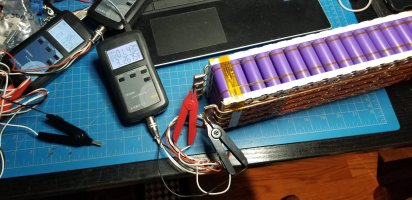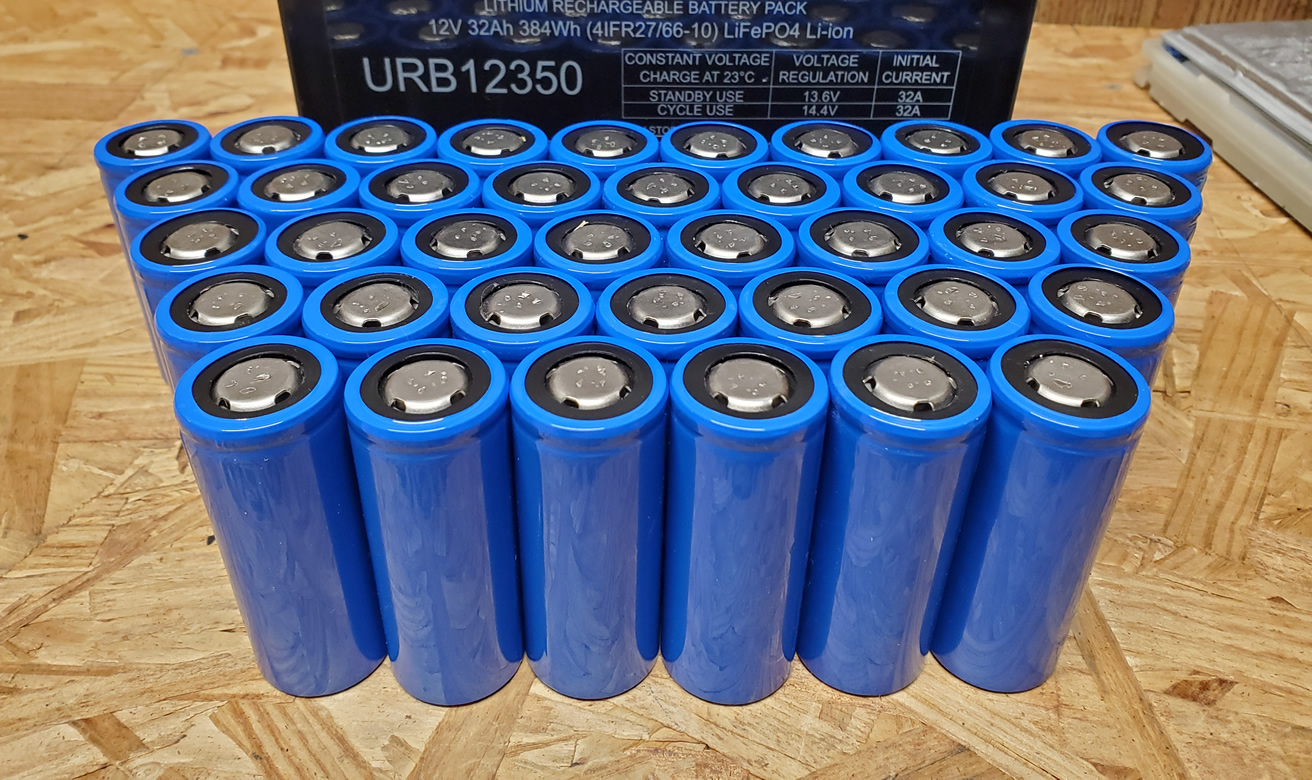OK i am learning that powerwall builders have different technology than EV builders, I don't understand your specialties very well.
I wrote the FAQ off the top of my head, OK i'll be more precise thanks:
LG MJ1 on my ebike:
Density gravimetric theoretic = 261.00 Wh/kg
Lead Acid gravimetric density = 41 Wh/kg...
https://sinovoltaics.com/wp-content/upload_folders/sinovoltaics.com/2019/09/Picture1.png
lithium has 10 times the volumetric density and my ebike has 6.2 times the gravimetric density of lead.
97% percent less work to craft a battery... did you see the sunset at the start of the timelapse? It was day when he started that video, the sunset only took 7% of the video. Sunset until twighlight takes 30 minutes, so he was working for 6 hours!!! I also counted the numbers of frames and his FPS and multiplied it. I have made two strong complex ebike batteries and cutting,wrapping,glueing,soldering,bmsing,wrapping,padding, took me 15 HOURS for 112 cells. It's much more complicated to weld automotive than 24V mega arrays which aren't vibration proof!!!
Technical simplicity reduces lithium price 20%... Yeah i take that back, my box reduces lithium price by 30%: The welding process means consumer batteries are welded off-site by an EU techinician / in China... Subsequent shipping is really expensive. An EU technician will charge consumers 150 to weld and glue and wrap 100 cells for an ebike/motorbike/camping car, it's super complex, So they're paying 250 euros of cost on top of the 250 they paid for the battery. ... My box only costs 90 Euros if I can make it a commodity, So instead of paying 250 to third parties... you pay 90 AND the box is re-sellable, so you can resell my box and reclaim all your money!!! And it's re-usable, so the second time you use it you get FREE packaging costs...
Look at the prices!!! Why is it from china? because the welding is very expensive.
https://www.wattuneed.com/en/lithiu...hium-ion-battery-10kwh-48v-0712971135673.html they're asking 6000 EUROS!!! for a EU built box,People can buy the same thing from me for only 3000 euros, plus you can resell the box for 500 euros if you get a see-through thermochromic steel clad one.
The lithium packing enigma has been called "the holy grail of lithium". I've never heard anyone saying any of those claims.
If you never heard it, perhaps it happened anyway. Be fair man! no one is arguing with it being called the holy grail there. IT IS!
If it were unsolvable, why are there plenty of solutions for it... There aren't: Nobody can build a lithium battery in 15 minutes which you can put on an ebike, which is dustproof and which can withstand years of rocky roads. Only someone who wants to burn their cherished Ebike would risk a ******* on there. (HBPowerwall even sensored Vr..zend that's proof it doesn't exist!) Look at the alternative company, he charges 130 dollars for 9x 18860 cells! he sells to dozens of foolish lampost and bus shelter integrators. Help me out! i'm trying to lower the price and raise the quality for everyboday.
please support me and stop these rip-off technologies making people MILLIONS!!!! yes, that guy got a 2 million loan from the EU for that BOX!!! Help a cheapskate indie ecologist! i'm an engineer!
Please show me a single other dustproof, robust easy build affordable box? This is it, i am the only one cheapskate enough to make it affordable.
I don't like the way i'm marketing myself either, I'm very nervous, camera shy, I don't have a filming location, i struggled for a coherent sounding dub... and maybe went OTT about the performance because I code formants, I like the word. I prefer to have a jolly team to film for me near Le Massif Central, i am a designer i shouldn't have to do this video selling this product, but at least you can see my motivations. It's honest and it's to help the planet and i want to break even, i don't want to rake up cash because i want to do other companies after.

 www.batgroupcraft.com Please Sign Up!
www.batgroupcraft.com Please Sign Up!






